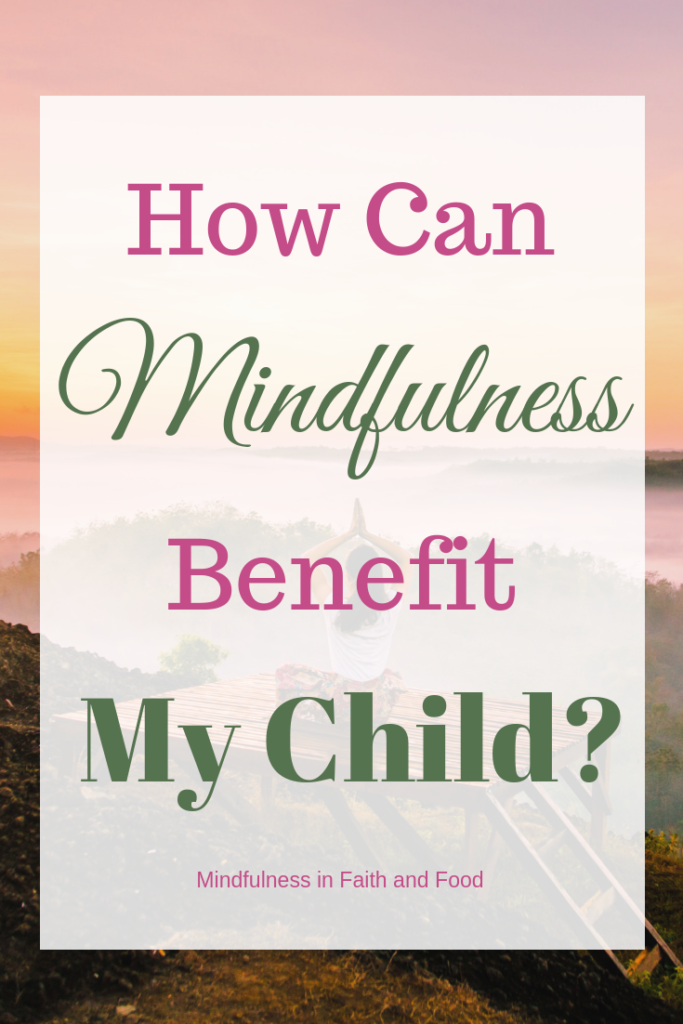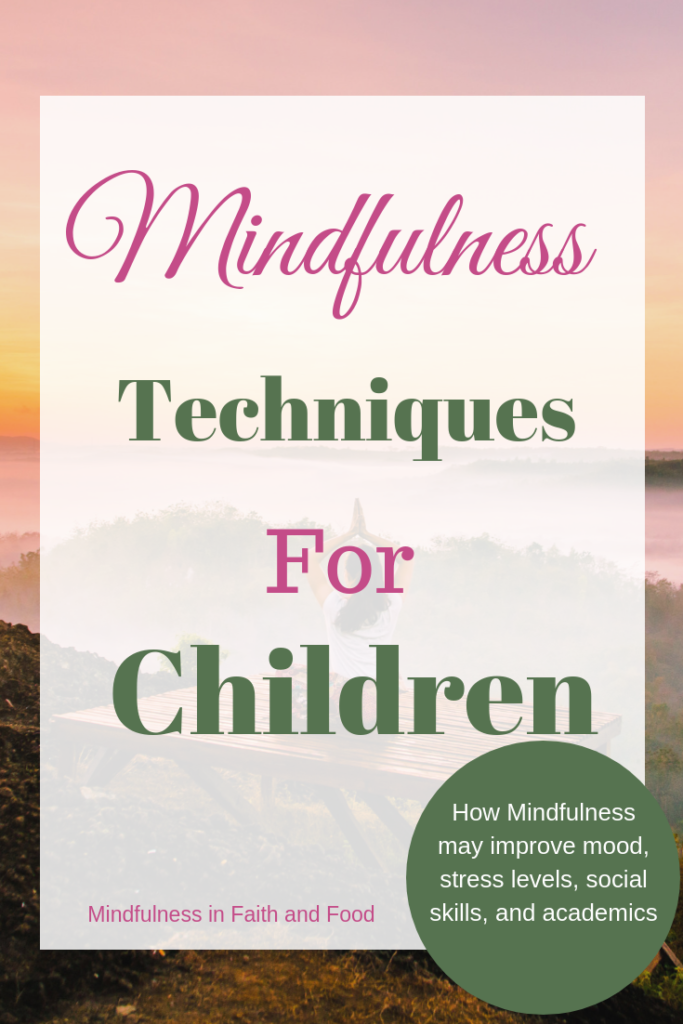
Benefits of Mindfulness for Children : May help improve mood, stress levels, social skills, and academics
How Can Mindfulness Benefit Our Children’s Mental Health?
Our children are just as busy as we are these days. Children often don’t have time to “stop and smell the roses,” and they often don’t have time to stop and express their emotions either. Did you know that because mindfulness techniques are so beneficial to children and their mental health that many schools have started incorporating mindfulness activities in schools? Even my children have come home talking about the mindfulness techniques they did in school that day. Our church has even started practicing mindfulness techniques to help our kids feel calm and ready to learn their Sunday school lessons.
According to “Time Magizine Special Edition: Mindfulness: The New Science of Health and Happiness,” research says Mindfulness, Kindness, and Meditation programs for children may improve social behaviors, mood, stress levels, and even academic performance and test scores.
This site contains affiliate links (See full disclosure here.)
Three Components of Mindfulness
So mindfulness sounds pretty great, but what exaclty is it?
There are several components to mindfulness, and for this post I want to discuss three:
- Being in the Present. Mindfulness is about being in the present moment. The past is gone and the future has not happened, but the present is HERE and NOW. Think about it. What do we spend most of our time stressing and worrying about?…The past and the future. Think about how much less stress we would have if we learned to focus on the present moment. In my experience, even when the busyness doesn’t stop, mindfulness can help de-stress because we are focusing on the present moment instead of thinking about all that we have to do in the future. With mindfulness, your are taking life one day and one moment at a time.
- Approaching Life with Graditude. One aspect of mindfulness in focusing on the positive in your life in that moment. Again, according to “Time Special Edition Mindfulness: The New Science of Health and Happiness,” gratitude practices have been associated with improved kidney function, a reduction in blood pressure, decreased stress hormones, increased energy levels, and increased reports of happiness.
- Pausing and breathing before action. When we pause before we speak, eat, cook, clean, or enter a room, we give ouselves a moment to center our minds. When we pause before doing, we usually make better decisions. During the pause, we can take a deep breath and calm our minds; then, we can think about what action and words are best. Perhaps this pause can even help us focus and enjoy the present moment, and help us choose kindness a little more often. The more often we choose kindness, the happier and less stressed we will be. Everyone feels better when we choose kind words and actions.
Mindfulness Techniques for Children
Mindfulness techniques give our brains time to rest, recharge, and even process our feelings. This is true for both adults and children.
Below are some mindfulness exercises I often do with my own children that help them de-stress and deal with their emotions:
-
Mindful Breathing
Mindful breathing is one of the classic mindfulness techniques and for good reason- it works! With mindful breathing we center our thoughts on one thing: breathing. Our brains have time to rest instead of thinking about 100s of things at once. Here is a quick example of a mindful breathing exercise for children:
- Close your eyes (If you are somewhere where you feel uncomfortable closing your eyes, you can leave them open).
- Take a deep (but slow) breath in; pause for about 3 seconds before slowly releasing your breath.
- Do this about 3 to 5 times
- While you are breathing, focus on your breath. You can do this by noticing your chest moving up and down, by noticing your stomach moving up and down, or by noticing your breath going in and out of your nose. Pick which one you would like to focus on.
- Your thoughts may wonder and that is completley okay and normal. When you notice your thoughts wondering, simply acknowledge your thoughts and calmly re-focus on your breathing.
The Breath Prayer
Another type of mindful breathing is called the breath prayer. This is actually not something new. In fact, the breath prayer is an ancient Christian practise. With the breath prayer, you breathe similarly to the technique above, except when you breathe in and out you repeat a one sentence prayer. You can also use a simple one sentence scripture for your prayer.
A simple breath prayer with our children could go something like this:
- Breath in slowly and say in your mind, “Thank you God..
- Pause for about 3 seconds..
- Breath out slowly and say in your mind, “…for the people in this room.”
For children of faith, a breath prayer can be a great way to calm and de-stress. A breath prayer is a fantastic reminder that God made this moment and is with us and guiding us in each moment. What a comfort to remember this throughout the day!
2. Minful Eating
Mindful eating can calm, relax, and recharge us in similar ways as mindful breathing. When you mindfully breath, your busy mind calms down by focusing on one thing: breathing. With mindful eating, your busy brain has a chance to calm down, and focus on one thing: eating.
Mindful Eating Basics:
Before eating, pause, look at your food, smell your food, and take the time to be thankful or pray. I often like to pray with my eyes open, so that I can look at the food I am thankful for.
The take your fitst bite. Focus on that bite. Notice the textures, the flavor, and your mouth chewing. Only focus on your eating. indful eating works best when the TV is off and the phone is put away.
Put the fork down while you are chewing. Many people prepare their next bite while chewing the one in their mouth. Try to avoid doing this. After you have completley swallowed your food; thake a sip of drink, and only then start preparing your next bite.
For more Mindful Eating Techniques click here.
3. Bedtime Breath Prayer and Mindful relaxing with
Breath prayers can be a calming way to fall asleep as well. I like to say a prayer thanking God for the soft bed and my cozy room. Before moving on to the Body Scan technique…
Another mindfulness techniques that helps children relax for sleeping is a body scan. I like to do the body scan like this:
- As you lay in your bed, go through your whole body noticing from head to toe how your bed feels against your body.
- First, climb under your covers and get comfortable.
- Now start at your feet. Tighten your feet for a couple of seconds, then completley relax them. Notice how your feet feel against the soft bed. Notice how your warm blanket feels against your feet.
- Next tense up your legs and then relax. Notice how the bed and blankets feel against your legs.
- Repeat the same steps for your belly and back; then, your arms, and your head.
- For your head, tense up your forhead and mouth, and when you relax your head, make sure you are relaxing your mouth, jaw and forehead. Relaxing your face muscles is my favorite part.
You can repeat this until you fall asleep or you may not get through the first round before you are off to dreamland.
More Resources
I hope these basic mindfulness techniques can help you and your child get started, but if you are ready to dive into mindfulness and learn more, there are plenty of amazing childhood mental health and mindfulness resources available. Checkout some of the mindfulness books for children and families below:
If you are searching for other excellent health education resources for kids and families, I recommend browsing Jumohealth.com. This site is full of information on physical and mental health topics for kids and their families.

Related Posts
How to Mindfully Eat to Lose Weight: A Step by Step Guide
The One Prayer that Stopped Me from Overeating
What Does Mindful Living Have to Do With Emotional Eating?
The Mindful Planner: Free Printable
The ONE Thing I Did to Lose Weight AND Strengthen My Walk with God
The Mindfully Healthy Lunch Box
You are free to retain any and all content here for personal use, but need permission to use it anywhere else on the internet.
This site is hosted by Bluehost.
